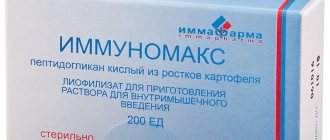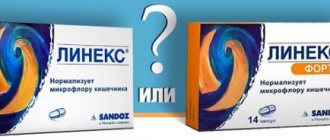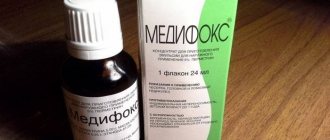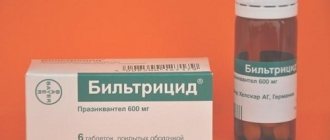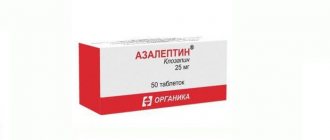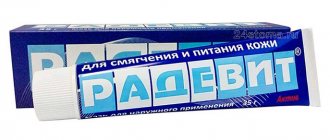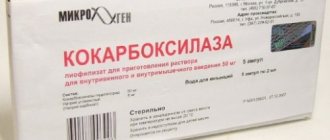Pharmacological action of Verapamil
Verapamil is a calcium channel blocker that reduces transmembrane calcium current. The drug more effectively blocks open channels of the depolarized membrane. Reduces the frequency and contractility of the pacemaker of the sinus node, as well as sinoatrial and AV conduction, conduction velocity in the AV node, promotes relaxation of smooth muscles (mainly arterioles), reduces peripheral vascular resistance, causes peripheral vasodilation, and reduces afterload. Verapamil increases myocardial perfusion, reduces blood pressure, promotes the reverse development of left ventricular hypertrophy, prevents the development and relieves spasm of the coronary arteries, and improves the outflow of blood from the ventricles.
When taking Verapamil, the frequency and intensity of headaches of vascular origin decreases.
In pseudohypertrophic Duchenne myopathy, taking this drug helps to inhibit neuromuscular transmission and prolong the recovery period after using vecuronium.
Contraindications to the use of Verapamil
According to the instructions, Verapamil cannot be prescribed for:
- Hypersensitivity;
- Severe hypotension;
- AV blockade II-III degree;
- Cardiogenic shock;
- Myocardial infarction;
- Severe bradycardia;
- Chronic heart failure stage III;
- Sick sinus syndrome;
- Digitalis intoxication;
- Atrial flutter and fibrillation;
- Sinoatrial block;
- Severe stenosis of the aortic mouth;
- Morgagni-Adams-Stokes syndrome;
- Pregnancy and lactation.
The drug is used with caution when:
- Chronic heart failure stages I and II;
- AV block of the first degree;
- Severe myopathy;
- Moderate or mild hypotension;
- Ventricular tachycardia;
- Kidney or liver failure.
Verapamil
Release form, composition and packaging
Film-coated tablets
1 tab.
verapamil hydrochloride 40 mg.
-“- 80 mg.
Excipients: disubstituted calcium phosphate, starch, butylated hydroxyanisole, purified talc, magnesium stearate, gelatin, methylparaben, hydroxypropyl methylcellulose, titanium dioxide, indigo carmine.
Dragees, capsules, solution for intravenous administration..
Clinical and pharmacological group: Calcium channel blocker.
Pharmacological action and pharmacokinetics
Antianginal, hypotensive, antiarrhythmic.
Increases myocardial perfusion, reduces the imbalance between the need and supply of oxygen to the heart, promotes regression of left ventricular hypertrophy, and lowers blood pressure.
Prevents the development and eliminates spasm of the coronary arteries during variant angina, improves the outflow of blood from the ventricles.
Reduces the frequency and severity of headaches of vascular origin.
When taken orally, the onset of action is noted after 1-2 hours. Under conditions of intravenous administration, the antiarrhythmic effect develops within 1-5 minutes.
It is excreted mainly by the kidneys and feces.
Penetrates into breast milk, passes through the placenta and is detected in the blood of the umbilical vein during childbirth.
Indications
- paroxysmal supraventricular tachycardia (except WPW syndrome),
- sinus tachycardia,
- atrial extrasystole,
- atrial fibrillation and flutter,
- angina pectoris (including Prinzmetal, tension, post-infarction),
- arterial hypertension,
- hypertensive crisis,
- idiopathic hypertrophic subaortic stenosis,
- hypertrophic cardiomyopathy.
Dosage regimen
Orally, 40-80 mg 3 times a day (for dosage forms of usual duration of action) - for angina pectoris and supraventricular tachycardia in 3 divided doses, for arterial hypertension - in 2 divided doses, daily dose for arterial hypertension - up to 480 mg, for HOCM - up to 720 mg.
For children with arterial hypertension - 10 mg/kg/day (in several doses), for supraventricular arrhythmia (up to 2 years) - 20 mg 2-3 times a day.
The daily dose of verapamil for children under 5 years of age is 40-60 mg; for children from 6 to 14 years old - 80-360 mg (in 3-4 doses).
For prolonged forms, the dose should be selected individually depending on the severity of the disease.
For arterial hypertension in adults - 240 mg in the morning.
If it is necessary to slowly lower blood pressure, the recommended initial dose is 120 mg 1 time per day in the morning.
The dose should be increased after 2 weeks of taking the drug.
The dose is increased to 480 mg/day (1 tablet in the morning and evening, with an interval of about 12 hours between doses).
For long-term therapy, the daily dose should not exceed 480 mg.
Exceeding the dose is possible only for a very short time under close medical supervision.
Take tablets, dragees, capsules without dissolving or chewing, with a small amount of liquid, preferably before meals or immediately after meals.
To relieve paroxysmal rhythm disturbances or hypertensive crisis, administer (the contents of the ampoule are diluted with 0.9% NaCl solution) intravenously in a stream, slowly (over 2-5 minutes at a rate of 5 mcg/kg/min) in a dose of 5-10 mg under blood pressure control, Heart rate and ECG.
If there is no effect, repeated administration after 20-30 minutes at the same dose is possible.
As maintenance therapy, intravenous drip administration is possible (infusion solution is prepared at the rate of 5 mg of verapamil per 150 ml of 0.9% NaCl solution, 5% dextrose solution or Ringer's solution).
A single dose of verapamil for infants with intravenous administration is 0.75-2 mg, for children aged 1-5 years - 2-3 mg, for children aged 6-14 years - 2.5-3.5 mg.
In case of hypertensive crisis, children are first given intravenous drips at a rate of 0.05-0.1 mg/kg/h. If this dose is insufficient, the dose is increased after 30-60 minutes. The average daily dose is 1.5 mg/kg.
For patients with severe liver failure, the daily dose should not exceed 120 mg.
Side effect
From the cardiovascular system and blood (hematopoiesis, hemostasis): hypotension, bradycardia (sinus), AV block, heart failure.
From the nervous system and sensory organs: headache, dizziness, nervousness, lethargy, drowsiness, weakness, fatigue, paresthesia.
From the gastrointestinal tract: nausea, dyspeptic symptoms, constipation; rarely - gingival hyperplasia, increased activity of liver transaminases, alkaline phosphatase.
Allergic reactions: skin rash, urticaria, itching; rarely - angioedema, Stevens-Johnson syndrome.
Other: facial skin flushing, bronchospasm (with intravenous administration), peripheral edema, very rarely - gynecomastia, increased prolactin secretion (isolated cases.)
Contraindications
- hypersensitivity,
- severe hypotension,
- cardiogenic shock,
- AV block II and III degrees,
- myocardial infarction (acute or recently suffered and complicated by bradycardia, hypotension, left ventricular failure),
- chronic heart failure stage III,
- WPW syndrome and sick sinus syndrome (if a pacemaker is not implanted),
- sinoatrial blockade,
- Morgagni-Adams-Stokes syndrome,
- digitalis intoxication,
- severe stenosis of the aortic mouth,
- pregnancy,
- lactation.
Restrictions on use: AV blockade of the first degree, chronic heart failure of stages I and II, severe bradycardia (less than 50 beats/min), mild or moderate hypotension, severe myopathy (Duchenne syndrome), impaired liver or kidney function, ventricular tachycardia with wide QRS complex (for intravenous administration).
Pregnancy and lactation
The use of verapamil during pregnancy is possible only when the expected benefit to the mother outweighs the potential risk to the fetus.
If it is necessary to use the drug during breastfeeding, it should be taken into account that verapamil is excreted in breast milk, so breastfeeding should be stopped.
special instructions
Rapid IV administration causes maternal hypotension leading to fetal distress. With long-term use, Cl decreases and bioavailability increases.
Prescribe with caution to patients with hypertrophic cardiomyopathy complicated by left ventricular obstruction, high wedge pressure in the pulmonary capillaries, paroxysmal nocturnal dyspnea or orthopnea, dysfunction of the sinoatrial node.
When prescribed to patients with severe impairment of liver function and neuromuscular transmission (Duchenne myopathy), constant medical supervision and possibly a dose reduction are required.
Use with caution while working for drivers of vehicles and people whose profession is associated with increased concentration (reaction speed decreases), it is recommended to avoid drinking alcohol.
Overdose
Symptoms: arterial hypotension, bradycardia, AV block, cardiogenic shock, coma, asystole.
Treatment: calcium gluconate (10-20 ml of 10% IV solution) is used as a specific antidote; for bradycardia and AV block, atropine, isoprenaline or orciprenaline are administered; for hypotension - plasma-substituting solutions, dopamine, norepinephrine; if signs of heart failure appear, dobutamine.
Drug interactions
Increases plasma levels of digoxin, cyclosporine, theophylline, carbamazepine, and decreases lithium. Weakens the antibacterial activity of rifampicin, the depressing effect of phenobarbital, the clearance of metoprolol and propranolol, and enhances the effect of muscle relaxants. Rifampicin, sulfinpyrazone, phenobarbital, calcium salts, vitamin D - weaken the effect.
The hypotensive effect is enhanced by antihypertensive drugs (diuretics, vasodilators), tricyclic and tetracyclic antidepressants and antipsychotics: antianginal - nitrates. Beta-blockers, class IA antiarrhythmics, cardiac glycosides, inhalational anesthetics, radiopaque agents potentiate a (mutually) inhibitory effect on the automatism of the sinoatrial node, AV conductivity and myocardial contractility.
Directions for use and dosage of Verapamil
Verapamil dragees, capsules and tablets are intended for oral administration. The duration of therapy and dosage of the drug in each specific case is selected individually depending on the severity of the disease, the patient’s condition and the effectiveness of treatment.
In order to prevent attacks of arrhythmia and angina pectoris, as well as for arterial hypertension, Verapamil is prescribed orally in a dosage of 40-80 mg 3-4 times a day. The dosage, if necessary, can be increased to 120-160 mg.
Maintenance therapy is carried out over a long period of time using smaller dosages of the drug.
Verapamil is prescribed for children:
Up to 4 years – 20 mg 2-3 times a day;
Up to 14 years – 40 mg 2-3 times a day.
Verapamil for injection is administered intravenously in an initial dose of 5-10 mg under the control of heart rate, blood pressure, and ECG. If the desired effect is not achieved, the drug is re-administered after half an hour (10 mg).
Who is prescribed
The drug in tablets is prescribed if the following are diagnosed:
- High blood pressure.
- ISHB.
- Stable angina and Prinzmetal angina.
- Heart rhythm disturbances.
The drug in liquid form for intravenous administration is recommended for:
- Hypertensive crisis.
- Tachycardia.
- Acute coronary insufficiency.
- Ventricular arrhythmia.
- Atrial fibrillation and flutter.
In each specific case, another drug may act better than Verapamil, but only the attending physician should prescribe it. Let's look at when you shouldn't use the product.
Side effects of Verapamil
When using Verapamil according to indications, it can cause certain adverse reactions:
- Cardiovascular system: bradycardia, decreased blood pressure, tachycardia, worsening or development of heart failure, angina pectoris, myocardial infarction, arrhythmia, third degree AV block, collapse, asystole;
- Digestive system: constipation, nausea, increased appetite, gum hyperplasia, increased activity of liver enzymes;
- Central and peripheral nervous systems: headache, dizziness, anxiety, fainting, increased fatigue, lethargy, asthenia, depression, drowsiness, extrapyramidal disorders;
- Allergic reactions: rash and itching on the skin, exudative erythema multiforme, flushing of the facial skin;
- Other: weight gain, agranulocytosis, hyperprolactinemia, gynecomastia, arthritis, galactorrhea, transient loss of vision, pulmonary edema, peripheral edema, asymptomatic thrombocytopenia.
Overdose
Symptoms of a drug overdose appear:
- Arterial hypotension;
- AV block;
- Bradycardia;
- Comoy;
- Cardiogenic shock;
- Asystole.
Treatment of overdose involves the administration of calcium gluconate as an antidote. For hypotension, dopamine, norepinephrine, and plasma replacement solutions are administered; for bradycardia and AV block - atropine, isoprenaline or orciprenaline; for symptoms of heart failure - dobutamine.
Price
The cost of the drug depends on which pharmacy the patient purchases it from and on the amount of the main substance contained inside the tablet:
- 40 mg of Verapamil, consisting of 50 tablets - costs from 35 to 45 rubles;
- 80 mg - from 55 to 75 rubles;
- A 5 mg ampoule costs 33 rubles.
The drug is inexpensive, but quite effective. Therefore, by purchasing it, the patient will quickly be able to normalize blood pressure.
Interaction with other drugs
When using Verapamil according to indications simultaneously with:
- Antihypertensive drugs – the antihypertensive effect is enhanced;
- Antiarrhythmic drugs, beta-blockers, drugs for inhalation anesthesia - increases the risk of arterial hypotension, bradycardia, heart failure, AV block;
- Nitrates – enhances the antianginal effect of Verapamil.
- Acetylsalicylic acid - increases the bleeding period;
- Buspirone – its side effects increase;
- Disopyramide - in patients with decompensated heart failure and cardiomyopathy, severe arterial hypotension and collapse are possible;
- Diclofenac - the concentration of Verapamil in plasma decreases;
- Carbamazepine – the effect of carbamazepine is enhanced and the risk of adverse reactions from the central nervous system increases;
- Rifampicin – the clinical effectiveness of Verapamil decreases;
- Tubocurarine chloride. vecuronium chloride – the muscle relaxant effect may be enhanced;
- Fluoxetine – increased side effects of Verapamil;
- Cimetidine – the effect of Verapamil is enhanced.
- Enflurane and etomidate - increases the period of anesthesia.
Release form
Enteric-coated tablets are packaged in blisters of 10 pieces each. Blisters along with instructions for use are placed in cardboard boxes. One box can contain 1, 2 or 5 blisters. In addition to blisters, the drug is also produced in plastic jars (50 tablets per piece). Each jar with attached instructions is placed in a cardboard package.
It is important to store the drug in a cool, dry place, preferably in the refrigerator in a tightly closed cardboard box placed in a plastic bag. The shelf life of the tablets is three years from the date of production.
Configuration of the verapamil molecule. The use of the drug is also practiced to reduce blood pressure in pets
special instructions
Before starting treatment with Verapamil, it is necessary to first compensate for heart failure.
During drug therapy, the functions of the cardiovascular and respiratory systems, the level of electrolytes and glucose in the blood, blood volume and the volume of urine excreted should be monitored.
Abruptly stopping treatment with this drug is not recommended.
Verapamil may cause drowsiness and dizziness, which should be taken into account when patients perform work that requires increased concentration.
Compound
Speaking about the composition, it is worth understanding that the main component in any form is the same, the difference lies only in the amount of active substances.
The main component is verapamil hydrochloride; additional substances are also present: calcium phosphate, titanium dioxide, sucrose, talc and others. These components are included in the tablet form of the medication.
If we talk about injections used intramuscularly, the main composition is supplemented by the presence of sodium hydroxide, chloride, and citric acid. Regardless of the difference in additional components, the drug has an equally good effect on lowering blood pressure.
Verapamil has a positive effect on the cardiac system, reduces the load on the body as a whole, and also has a depressing effect on sinoatrial conduction.
